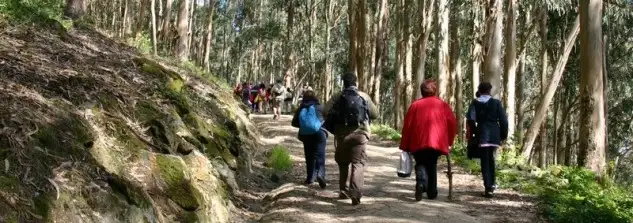
Cis Islands, the paradise of the Spanish Northwest.
Cis Islands, the paradise of the Spanish Northwest.
The Cis Islands, belonging to the Park of the Atlantic Islands, in full Rías Baixas of Galicia, which extend from the Ria of Arousa to that of Vigo, emerging from the Atlantic Ocean, and at the same time embellishing the marine landscape with the magic of its cliffs, make up a shackle of nature that protects the rivers by favoring their wealth and biodiversity.
In its bowels, at the bottom of the sea, we keep the most precious ecological riches of this National Park, guarded by the cannons of the ancient ships here sunk. It is certainly a place to discover the mysteries and legends of the Atlantic. It represents natural systems linked to coastal areas and continental shelf of the EuroSiberian Region. The cliffs, the bushes, the dunes and the beaches, as well as the different seabed (rock, sand, shell...) create a large mosaic of ecosystems on these islands and the waters around them.
This variety of scenarios accommodates a large number of species: more than 200 types of algae among which many fish and molluscs are hunted and raised, seabirds that nest on the slopes of the cliffs and fish in the shallow waters, plants surprisingly adapted to live between the sands of the dunes or in the narrow cracks of the cliffs... The preservation of these natural values is a challenge in which we must all participate.
In the Cies, the Mesolithic (about 10,000 years ago) were found to be useful, but remains of the following prehistoric stages (Neolithic, Megalitic and Calcolytic) have not yet been found. The first settlement of which we have clear evidence is the Spanish village of the Iron Age located on the western slope of Mount Faro (on the North Island). It is dated between 600 and 100 BC The inhabitants of this town were fed by fish and the abundant seafood of the coast. They also included crops, hunting and eggs in their diet. In the period of Roman domination, the archipelago takes great importance in taking refuge in it the Herminians, persecuted and harassed by the Roman legions, commanded by Julius Caesar himself. The Romans called them "insulae deorum" or island of the gods. Ceramics and even a gold ring dating back to the 2nd century AD have been found.
In the 11th century, the first Benedictine monasteries were attacked by the Normans and reoccupied at the end of the 13th century. In the 14th century the monastery is reestablished with the order of the Franciscan. In the XVI-XVIII centuries, the island is under continuous attack by pirates such as the famous pirate Francis Drake and continued attacks by English and French warships.
From the first half of the 19th century the situation is pacified and fisheries and warehouses are installed. There are many abandoned buildings in the ruinous state of this time on the island. Its inhabitants lived from fishing, agriculture and caprine and ovine livestock. In 1840 it was ordered to be annexed to the municipality of Vigo. Between 1851 and 1853 the first lighthouse, that of Monte Faro and later the dam that unites both islands, was built. Until the middle of the last century there were many families who left the islands because of the scarce means there. Today there are still some houses built in the 1960s. In 1980 they were declared Natural Park and today they belong to the National Maritime-Terrestrial Park of the Atlantic Islands of Galicia along with the archipelagos of Ons, Sálvora and Cortegada.
For more information, as well as planning requirements to be able to visit the Park, enter the following website:
© 2024 Nautica Digital Europe - www.nauticadigital.eu
















